Philips DreamStation Auto BIPAP Features
Patient driven design
Simplified device evaluation
Cost-effective connectivity options
Acclimation made easy
Specifications
- Modes: Fixed CPAP, Fixed BiPAP, Auto BiPAP
- Features: EZ Start
- Pressure Range: 4 to 25 cm H2O
- Flex Comfort: C-Flex, C-Flex+, Bi-Flex
- Humidification Modes: Fixed, Adaptive, Heated Tube
- Mask Type Resistance Control: Standard
- Ramp (0 – 45 Minutes): Ramp, SmartRamp
- Altitude Compensation: Automatic
- Advance Event Detection: Standard
- Flow Waveform: Standard
- Modem Compatibility: Standard
- Built-in Bluetooth: Standard
- Connectivity: Standard
- DreamMapper Compatibility: Standard
- Oximetry Compatibility: Standard
- Check Mask Fit Feature: Standard
- Performance Check: Standard
- BiPAP Dimensions with Humidifier: 11.7″ L x 7.6″ W x 3.3″ H
- Weight with Humidifier & Power Supply: 4.37 lbs
- BiPAP Dimensions: 5.5″ L x 7.6″ W x 3.3″H
- Weight with Power Supply: 2.94 lbs.
- Noise Level: Less than 30 db
in the Box
- Philips Respironics DreamStation Auto BIPAPBiPAP
- User Manual
- Carrying Case
- Power Cord
- Power Supply
- SD Card
- Flexible Tubing
- Reusable Pollen Filter
- Disposable Ultra-Fine Filter
Warranty – 2 Years
Frequently Asked Questions (FAQ’s)
Q: What is Philips Dreamstation Auto BiPAP?
A: DreamStation BiPAP auto BiPAP delivers optimal ventilation with minimal intervention for patients with central, complex, and periodic breathing problems.
Q: How does Philips Dreamstation Auto BiPAP work?
A: The Philips DreamStation Auto BiPAP delivers a continuous flow of pressurized air to the user’s airway to prevent or alleviate sleep-related breathing disorders, such as obstructive sleep apnea (OSA). Here’s how it works:
The DreamStation Auto BiPAP draws in room air through an integrated filter. The air is then filtered to remove dust and other particles to ensure clean; breathable air is delivered to the user. Before using the device, a healthcare provider sets the initial pressure settings based on the user’s specific needs. These settings are determined through a sleep study or assessment to determine the air pressure required to keep the user’s airway open during sleep. The DreamStation Auto BiPAP has algorithms that continuously monitor the user’s breathing patterns throughout the night. Suppose the device detects any obstruction in the airway, such as a reduction in airflow or a pause in breathing (apnea). In that case, it will automatically adjust the air pressure to a higher level to help keep the airway open. The device records the user’s therapy data, including the pressure levels, breathing events, and usage hours. This data can be accessed by both the user and their healthcare provider to assess the effectiveness of the therapy and make any necessary adjustments.
Q: What is the price of Philips Dreamstation Auto biPAP?
A: The price of Philips Dreamstation Auto Bipap in India ranges from ₹ 84000 to ₹ 98000, depending upon the accessories provided.
Q: What conditions can Philips Dreamstation Auto BiPAP can treat?
A: The Philips DreamStation Auto BiPAP delivers a continuous flow of pressurized air to the user’s airway to prevent or alleviate sleep-related breathing disorders, such as obstructive sleep apnea (OSA). Here’s how it works:
The DreamStation Auto BiPAP draws in room air through an integrated filter. The air is then filtered to remove dust and other particles to ensure clean; breathable air is delivered to the user. Before using the device, a healthcare provider sets the initial pressure settings based on the user’s specific needs. These settings are determined through a sleep study or assessment to determine the appropriate pressure. The DreamStation Auto BiPAP has algorithms that continuously monitor the user’s breathing patterns throughout the night. Suppose the device detects any obstruction in the airway, such as a reduction in airflow or a pause in breathing (apnea). In that case, it will automatically adjust the air pressure to a higher level to help keep the airway open. Air pressure is required to keep the user’s airway open during sleep. The device records the user’s therapy data, including the pressure levels, breathing events, and usage hours. This data can be accessed by both the user and their healthcare provider to assess the effectiveness of the therapy and make any necessary adjustments. The DreamStation Auto BiPAP connects to a mask (such as a CPAP or BiPAP mask) and tubing that directs the pressurized air to the user’s airway. Depending on the user’s needs and comfort, the mask is worn over the nose, mouth, or both.
Q: Do I need a prescription for Philips Dreamstation Auto BiPAP?
A: Yes, you will need a prescription from your doctor to use Philips Dreamstation Auto BiPAP.
Q: What Modes are available in Philips Dreamstation Auto BiPAP?
A: CPAP, S & Auto S are Philips Dreamstation Auto BiPAP modes.
Q: Is Philips Dreamstation Auto BiPAP easy to set up and use?
A: The Philips DreamStation Auto BiPAP is designed to be user-friendly, and its setup and use can be relatively straightforward. However, the ease of setup and use may vary depending on the individual’s familiarity with such devices and their specific needs.
Before obtaining the device, you will need a prescription from a healthcare provider. They will determine the appropriate pressure settings based on your condition and needs. You can obtain the DreamStation Auto BiPAP from a provider or durable medical equipment (DME) supplier. They will provide you with the necessary equipment, typically including the device, tubing, mask, and other accessories. Connect the tubing to the device and the mask. Make sure all connections are secure. Plug the device into a power source and turn it on. Follow the device’s user manual to navigate the menu and settings. Once comfortable with the mask and device settings, you can use the DreamStation Auto BiPAP during sleep. The device will automatically adjust the air pressure based on your breathing patterns.
Q: What is the difference between Philips Dreamstation Auto CPAP & Philips Dreamstation Auto Bipap?
A: The critical difference between the Philips DreamStation Auto CPAP and the Philips DreamStation auto BiPAP lies in the type of positive airway pressure (PAP) therapy they provide and the specific conditions they are designed to treat. Here’s a breakdown of the differences between these two devices:
1. Therapy Type:
DreamStation Auto CPAP: The DreamStation Auto CPAP (Continuous Positive Airway Pressure) is designed to provide continuous, fixed-pressure therapy. It delivers a constant level of pressure throughout the night, which your healthcare provider determines based on your sleep study and diagnosis.
DreamStation Auto BiPAP: The DreamStation BiPAP is a BiPAP machine. BiPAP, or bilevel positive airway pressure, provides two distinct levels of pressure: one for inhalation (IPAP) and a lower one for exhalation (EPAP).
2. Pressure Adjustment:
DreamStation Auto CPAP: The Auto CPAP continuously adjusts pressure within a predetermined range to respond to your breathing patterns throughout the night. It detects apneas and hypopneas and increases pressure to maintain airway patency.
DreamStation Auto BiPAP: The Dreamstation auto Bipap combines inspiratory positive airway pressure (IPAP) and expiratory positive airway pressure (EPAP) & auto adjusts the EPAP throughout the sleep according to patient requirements.
Q: Which masks are compatible with Philips Dreamstation Auto BiPAP?
A: Dreamstation Bipap Auto has a standard 22 MM connector so that most masks will work with the device. Some recommended masks are BMC Full Face Mask, Philips Respironics Dreamwear Nasal Mask, Philips Respironics Comfort Gel Full Face Mask, and Philips Dreamwear Full Face Mask.
Q: Can I use Philips Dreamstation Auto BiPAP during travel?
A: You can use it during travel because it is also easy to carry and comfortable.
Q: How often should I replace the filters and other parts?
A: Replace your DreamStation Auto Bipap reusable filter every six months & Ultrafine Filters every three Months.
Q: How do I clean and maintain my Philips Dreamstation Auto BiPAP?
A: Cleaning and maintaining your Philips DreamStation Auto BiPAP machine is essential to ensure its performance, hygiene, and longevity. Here are the general steps for cleaning and maintaining your DreamStation Auto BiPAP:
Before you begin cleaning, wash your hands thoroughly with soap and water to prevent the transfer of germs. Before cleaning:
- Please turn off the DreamStation Auto BiPAP machine and unplug it from the power source.
- Wipe down the exterior surfaces of the machine with a soft, damp cloth.
- Avoid using abrasive or harsh cleaning materials that may damage the plastic casing.
- Do not allow moisture to enter any openings on the machine.
Depending on the model, your DreamStation may have one or more filters. Check the user manual to identify and access the filter(s). Disconnect the tubing from the machine and the mask. Clean the tubing, mask, and other accessories, such as the humidifier chamber, in warm, soapy water using a mild detergent. Rinse thoroughly. Allow all components to air dry before reassembling and using them.
Q: What data does Philips Dreamstation Auto BiPAP record, and how can I access it?
A: The Philips DreamStation Auto BiPAP machine typically records various data related to your therapy, which can be used to monitor your progress and ensure effective treatment for sleep-related breathing disorders. The specific data recorded may vary slightly depending on the model and version of the machine. Still, it generally includes the following types of information: Usage Data, AHI (Apnea-Hypopnea Index), Leak Data, Pressure Data, Flow Data, and Compliance Data.
Q: What are the benefits of using Philips Dreamstation Auto BiPAP?
A: Some key benefits of using the DreamStation Auto BiPAP are Effective Treatment, Personalized Therapy, Enhanced Comfort, Data Monitoring, Remote Monitoring, Improved Sleep Quality, Reduced Health Risks, and Portable and Travel-Friendly.
Q: Does Philips Dreamstation Auto BiPAP come with a warranty?
A: Yes, MG Medicare provides you with a two-year warranty on Philips Dreamstation Auto BiPAP.
Q: Can I use Philips Dreamstation Auto Bipap for pediatric patients?
A: The use of the DreamStation Auto Bipap for pediatric patients depends on several factors, including the child’s specific needs and the recommendation of a healthcare provider. While the DreamStation Auto BiPAP can be used for pediatric patients in some cases, it’s crucial to follow the guidance of a healthcare professional and ensure that the device is suitable for the child’s age, size, and medical condition.

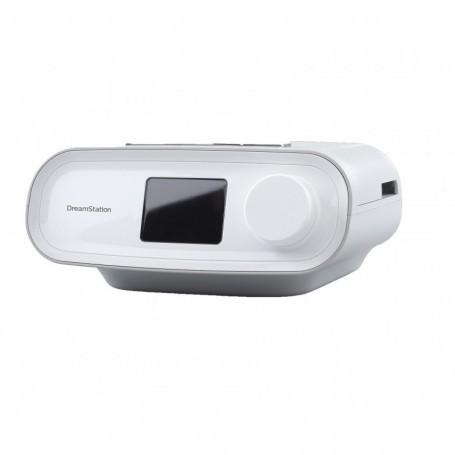
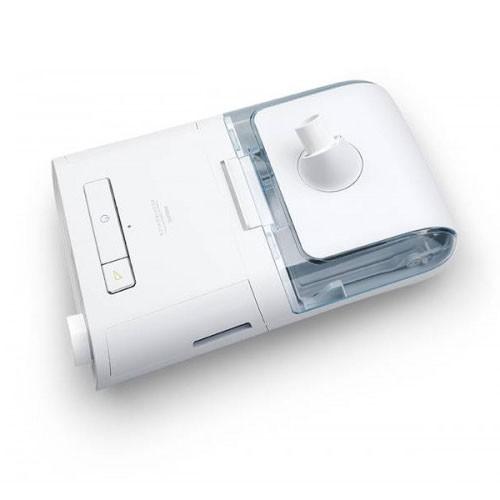
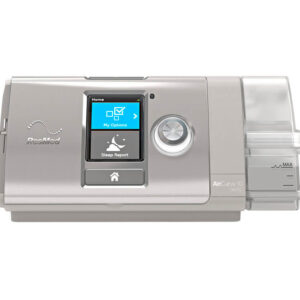
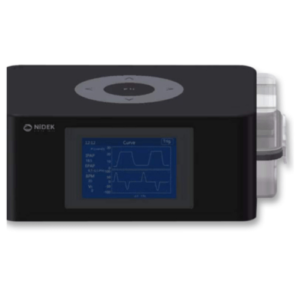
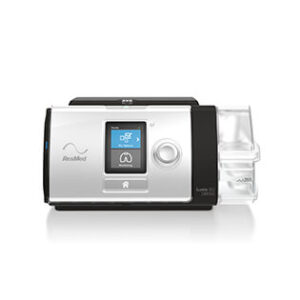
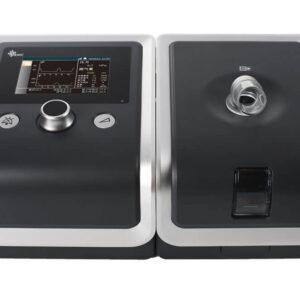
Reviews
There are no reviews yet.